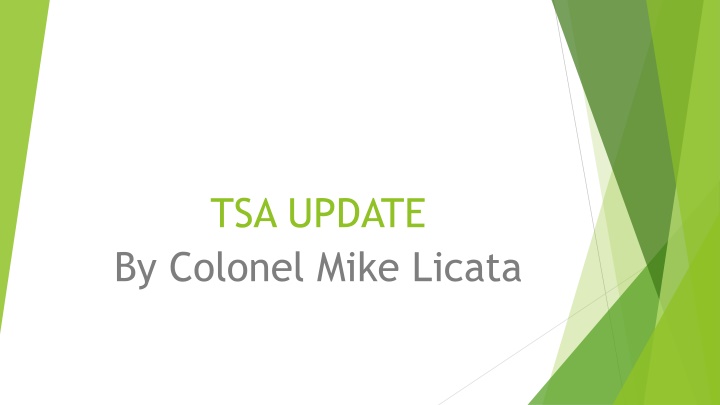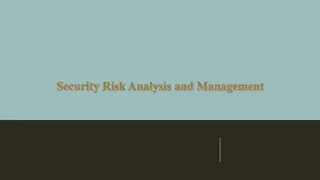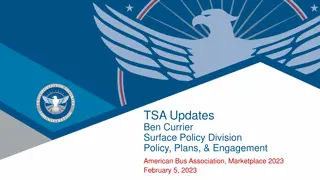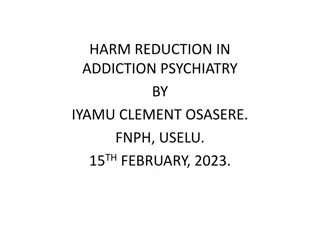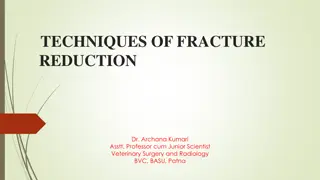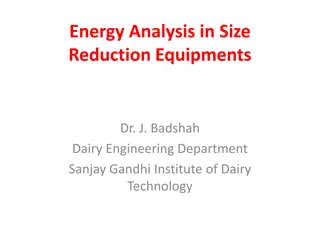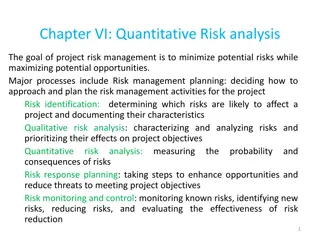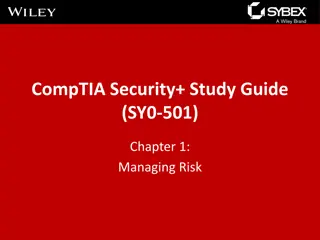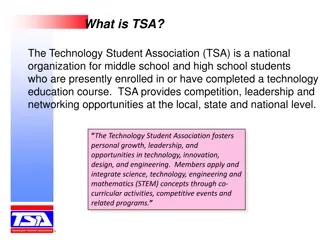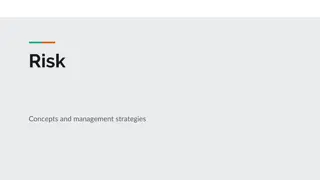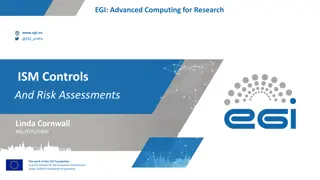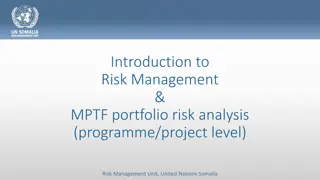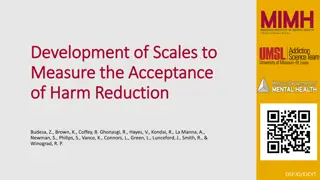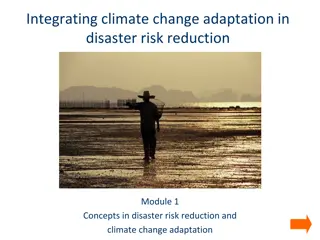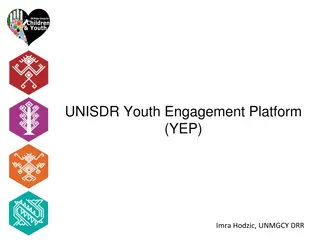TSA Security Guidelines and Risk Reduction Strategies
Explore the legal requirements for security coordination, assessments, and training as mandated by TSA. Discover what services and resources TSA offers, learn how to protect your company through risk assessment, planning, and training, and understand risk reduction strategies using the risk formula. Gain insights on defining and quantifying risks, and consider the best and worst-case scenarios to enhance security measures.
Download Presentation

Please find below an Image/Link to download the presentation.
The content on the website is provided AS IS for your information and personal use only. It may not be sold, licensed, or shared on other websites without obtaining consent from the author.If you encounter any issues during the download, it is possible that the publisher has removed the file from their server.
You are allowed to download the files provided on this website for personal or commercial use, subject to the condition that they are used lawfully. All files are the property of their respective owners.
The content on the website is provided AS IS for your information and personal use only. It may not be sold, licensed, or shared on other websites without obtaining consent from the author.
E N D
Presentation Transcript
TSA UPDATE By Colonel Mike Licata
TOPICS 1. What Law requires 2. 2. What you can get for free from TSA 3. How to Protect your company 4. Risk Reduction Stratgies
What Law Requires Security Coordinator Security Assessment Security Plans Security Training Required By law, not currently enforced other than in civil law suits, soon to be mandated by TSA
What TSA Can Do for you BASE TSTART (PLAN and ASSESSMENTS) TRAINING HANDOUTS OTRB ISAC EMAIL THREAT WARNING GRANTS EXERCISE HANDOUTS
How to protect your company Assess your risk Write a plan Train your people Consider getting a free TSA Agent to assist or a paid consultant Good Security Program can pay for itself, in grants, loss reduction, and civil protection from law suits
Risk Reduction Strategies How do you define Risk? How do you quantify it in numbers?
Risk Formula RISK = Threats X Vulnerability X Consequence Threats = Terrorist Threats, criminal and Vandals Vulnerability = How Open a bus is open to an attack (no GPS, No Fence, no security training etc . Consequence = A Bus Blows up (Horrific) versus Bus gets robbed (bad)
Risk Formula RISK = Threats X Vulnerability X Consequence Threats = worst Threat (5) and least Risk (1) Vulnerability = No protection (5) and complete protection (1) Consequence = A Bus Blows up (5) versus Bus gets robbed (1)
Risk worst case RISK = Threats X Vulnerability X Consequence Threats = Terrorist Threats with a Bomb (5) Vulnerability = Bus stored in a city with no fence, no cameras and no GPS (5) Consequence = A Bus Blows up (5) Total Risk (125) = 5 x 5 x 5
Risk Best case RISK = Threats X Vulnerability X Consequence Threats = Stolen Bus (1) Vulnerability = Bus stored in a fence, well light parking lots with GPS and cameras (1) Consequence = Loss revenue (1) Total Risk (1) = 1 x 1 x 1
RISK Range ( 1 to 125) Low risk 1 to 30 Medium Risk (31 to 60) High Risk (61 to 125)
Risk Challenge For Industry Very Subjective depends on the Evaluator No GPS: One evaluator says that is a 5, another a one
RISK PROJECT Standardize -- Make it easier to use -- Make the numbers more meaningful -- Can be used to get grant funding
Grant Funding FEMA and TSA has agreed to put the numbers together for Threats We should do Consequences and Vulnerability with standardized Numbers Consequences of all the bad things that can happen from cyber attack, bus blowing up, active shooters (1 to 5) Vulnerabilities Grade each protective measure
Vulnerabilities 100% Protected bus = 1 No GPS = +1 No Security Training +1/2 No Fence +1/2 No Bus cameras + 1/2 No Security Cameras + 1/2 No Alarm +1/2 No Lighting + 1/2
Need Help Volunteers Meet about 4 or 5 times for one hour Small Company (;less than 50 buses) Medium Company (more than 50 buses, less than 100) Large Company: Greater than 100 Buses NOTE: CYBER PROBLEMS AND VOLUNTEERS
Risk Formula RISK = Threats X Vulnerability X Consequence Threats = Terrorist Threats, criminal and Vandals Vulnerability = How Open a bus is open to an attack (no GPS, No Fence, no security training etc . Consequence = A Bus Blows up (Horrific) versus Bus gets robbed (bad)
Risk Formula RISK = Threats X Vulnerability X Consequence Threats = Terrorist Threats, criminal and Vandals Vulnerability = How Open a bus is open to an attack (no GPS, No Fence, no security training etc . Consequence = A Bus Blows up (Horrific) versus Bus gets robbed (bad)
